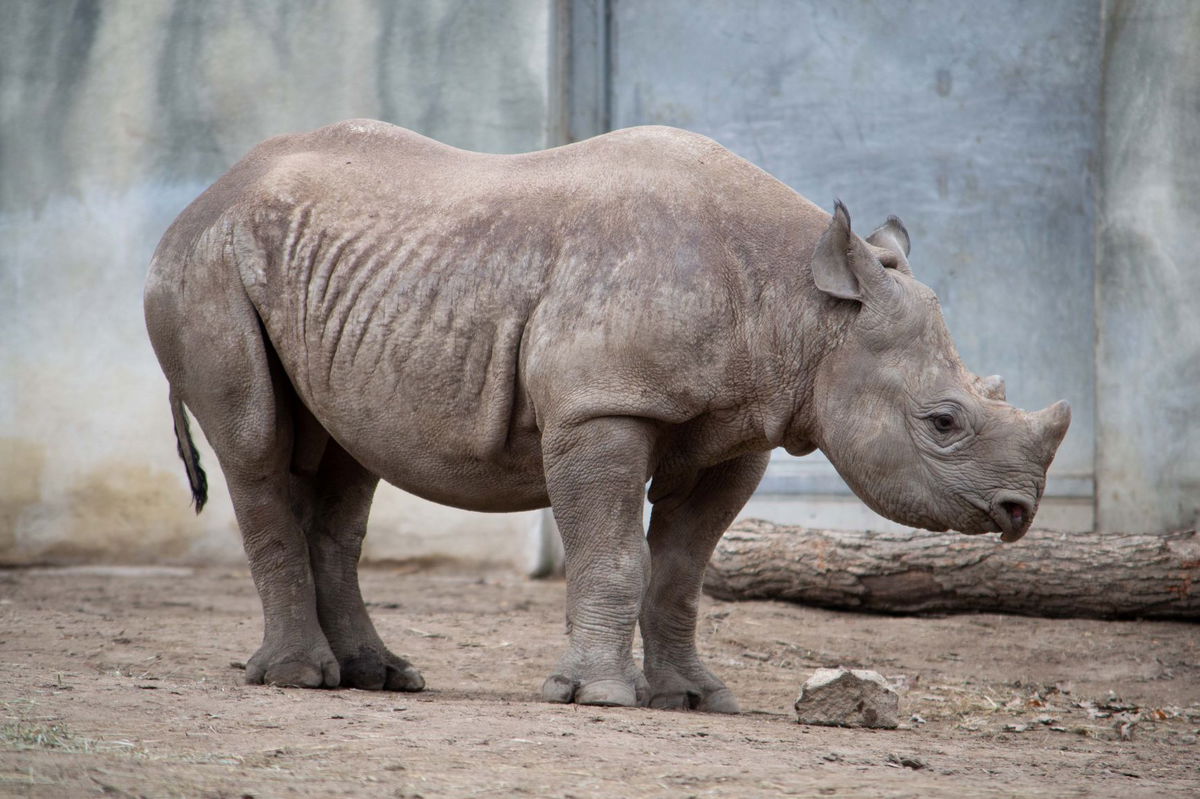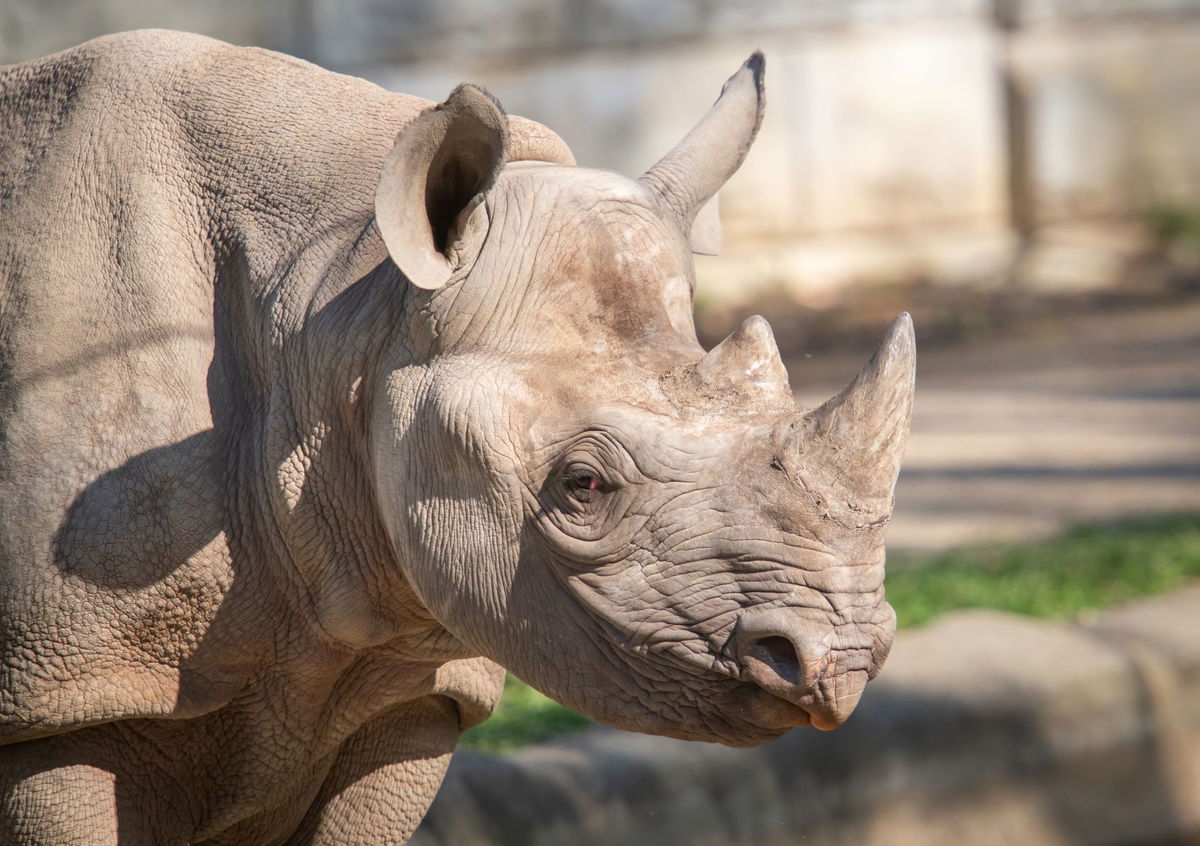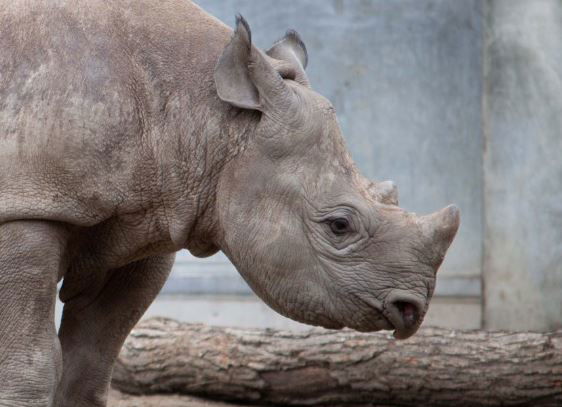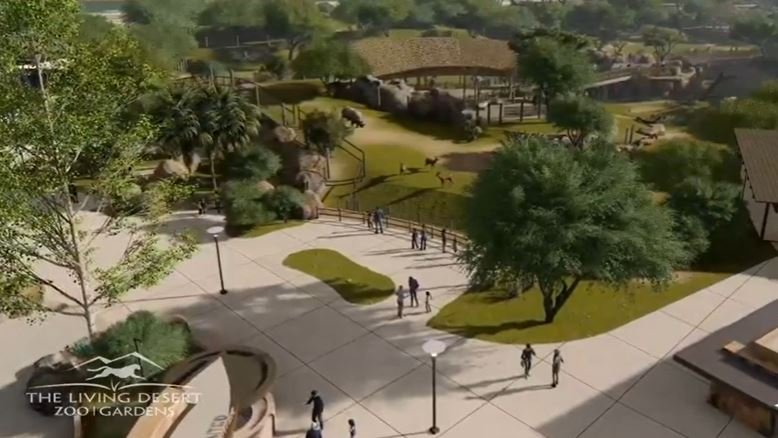Coming soon: Meet the rhinos headed to The Living Desert Zoo and Gardens
Welcome to the Coachella Valley, Jaali and Nia! The Living Desert Zoo and Gardens will be home to two eastern black rhinos this fall.
“This is the first time The Living Desert will be home to rhinoceros, and the team has been hard at work preparing for their arrival,” Allen Monroe, President/CEO of The Living Desert Zoo and Gardens told News Channel 3 in a statement.

“We can’t wait to introduce Jaali and Nia to their new home at The Living Desert,” RoxAnna Breitigan, Director of Animal Care said.

Zoo staff hope the pair will form a family unit in the new habitat. “As one of only 25 AZA-accredited facilities to care for eastern black rhinos, we all work together collaboratively to ensure this iconic species doesn’t go extinct." Breitigan said. "These two have been strategically matched, and we have high hopes for their future breeding success here at The Living Desert.”

Jaali and Nia won't be alone in their new habitat. The Zoo also expects to add eleven new species including springbok, waterbuck, pelicans, naked mole rats, and mongoose.
The Rhino Savanna will showcase many of Africa’s iconic species, with the eastern black rhino taking centerstage and highlighting their current plight and the important conservation efforts underway to save the species. Currently listed by the IUCN (International Union for Conservation of Nature) as Critically Endangered, eastern black rhino (Diceros bicornis michaeli) number fewer than 5,600 individuals across Africa. Native to the savannas and grasslands of southern and eastern Africa, black rhinos are browsers eating from trees and bushes, have distinguishing features including two horns, a prehensile lip, large cone-shaped ears, thick skin, and mature adults can weigh more than 3,000 pounds. Black rhinos’ main threats are humans, and in particular, the current rampant poaching for their horns for ill-perceived medicinal uses.
The Living Desert Zoo and Gardens

Meet Jaali: Jaali was born December 24, 2019 to mother, Doppsee, and father, Phineus, and his birth marked the first rhino birth at the Potter Park Zoo in its 100-year history. Jaali means “powerful” in Swahili, and according to his animal care team at Potter Park Zoo, he is very curious and loves attention. Jaali is coming from the Potter Park Zoo in Lansing, Michigan.

Meet Nia: Nia, meaning “purpose” in Swahili, was born August 20, 2018 to mother, Inge, and father, Forrest. Her animal care team has shared that Nia is very intelligent and eager to learn and participate in her husbandry training. Nia will be arriving from the Cleveland Metroparks Zoo in Cleveland, Ohio.
The new habitat
Last September, The Living Desert gave News Channel 3 viewers an inside look at the progress. Check out that report on the new rhino habitat here.
"You know those amazing chubby unicorns as we like to call them; they are critically endangered in the wild," CEO and President of The Living Desert Zoo and Gardens, Allen Monroe told News Channel 3 during an exclusive interview last fall.
CHECK IT OUT: Interactive live webcams showing the animals of the Living Desert Zoo & Gardens
It's a part of a large effort called "Crossroads for Conservation." This is a master plan that started in 2015 to help protect endangered species.
You can watch the construction live here:
"Now we're starting to add new animal components, new animal habitats so we can tell the conservation stories of some amazing desert species," Monroe said at the time. "This will be a multi-species habitat and the star attractions there will be a breeding pair of black rhinos," he said.
Check out the video below to see the plans for the rhino savanna.
They're crossing their fingers to have some baby rhinos at the zoo in the next few years, but that's not all.
MORE: Living Desert Zoo and Gardens nominated for travel awards
"We have other species of antelope that'll be in with the rhinos," Monroe shared. "Things like Springbok and Waterbok, Klipspringer, and new species of birds that we'll be bringing into our animal collection here. Species of pelicans and vultures," he said.

This is a massive project that costs $17 million.
So where is the money coming from? "The funds from this kind of project come from our capital programs and so we've been doing fundraising for the last several years to raise the millions of dollars that are necessary that donors give us specifically to continue to improve the park on a master scale like this," he said last fall.
“The $17-million four-acre Rhino Savanna is only possible because of the incredible and steadfast support of our members, donors, and the Coachella Valley community,” Monroe said in a statement released Thursday. “Rhinos are iconic symbols of the wildlife trafficking crisis, and this new habitat will help us educate our guests about the plight of the rhino and allow us to continue our efforts protecting the black rhino in Africa.”



